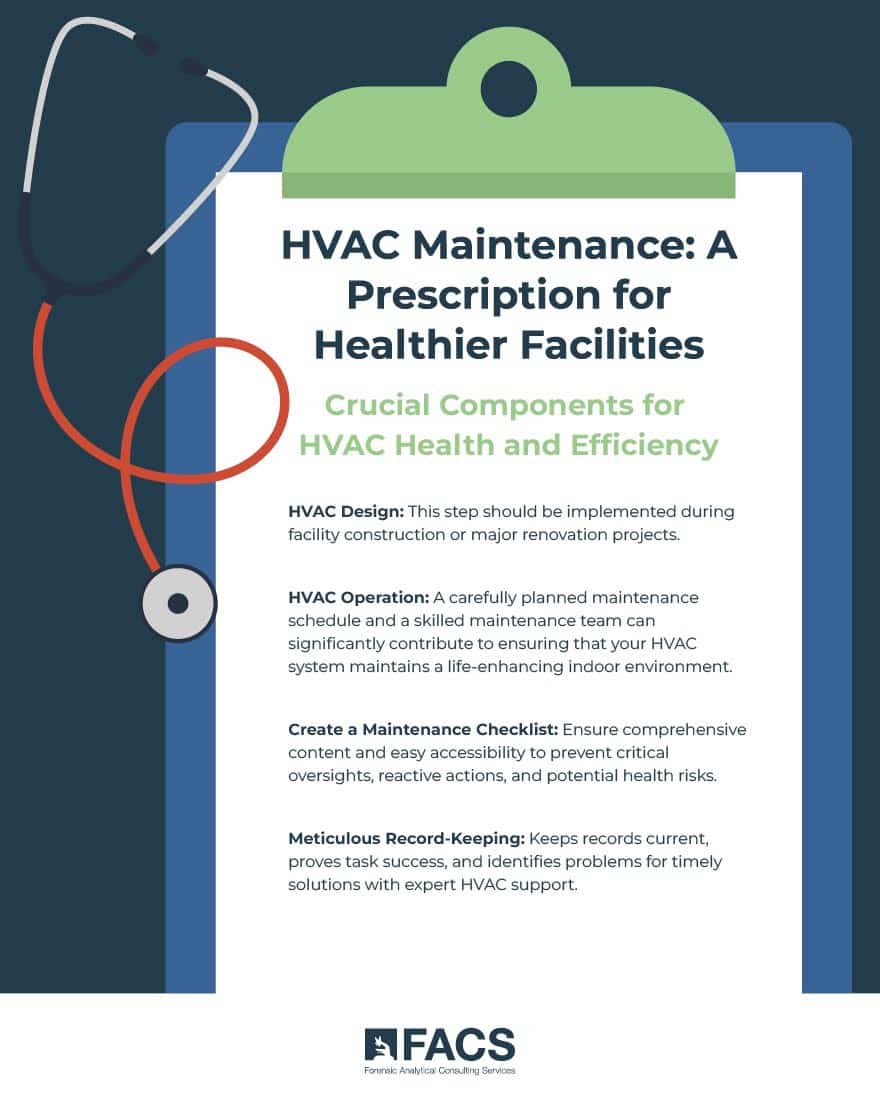Hospitals, clinics, and other specialized healthcare providers present a unique environment where air quality is paramount. Hazards such as surgical smoke, aerosolized medications used in treatments, and airborne infectious agents are commonplace in healthcare and go well beyond the challenges faced in a typical office building or school classroom.
The healthcare environment is further complicated by the diversity of people who work at and visit the facility. Occupants can range from infants to the elderly and from having great health to being severely immunocompromised. People of all genders, races, and levels of education need access to healthcare, and all of them rightfully expect their health will be protected and (hopefully) elevated there.
Beneath it all is a relatively silent and seldom-praised partner that works around the clock to help keep the internal air quality at an optimum level. This article will briefly discuss HVAC systems in healthcare facilities and their significant contribution to meeting Environment of Care standards.
Environment of Care in Hospitals and Other Healthcare Facilities
Standards and guidelines for HVAC Systems in healthcare facilities are outlined in ASHRAE 170 and 62. The Facilities Guideline Institute provides many useful resources on the topic, as does the Association for Professionals in Infection Control and Epidemiology (APIC). They are all excellent sources of information. Here, we will cover best practices for HVAC evaluation and maintenance.
Research concerning Aspergillus outbreaks in healthcare found that airborne diseases have been linked to poorly functioning HVAC systems. According to the Healthcare Surfaces Institute, not only will approximately 1 out of 25 patients at a healthcare facility “acquire an infection unrelated to the issue for which they sought help,” but healthcare-associated infections are one of the “leading causes of death” in the United States. HVAC isn’t the only piece of the environmental quality puzzle, but it is a contributing factor that facility managers have much control over.
While you can’t influence the weather outside and have little governance over who may enter your facility and who may not, there are two factors you can do much about:
- HVAC design is best considered during facility construction or renovation projects. The “healthy building” movement has piqued public and organizational interest in the internal environments in which we work and live. That said, design modifications or even HVAC system replacements can be performed when the need is sufficiently demonstrated, whether your facility is just being constructed or is ready for a major renovation project.
- HVAC operation is the area where you have plenty of control. Your maintenance schedule and your maintenance team can do much towards making sure your HVAC system keeps your indoor environment life-enhancing instead of life-threatening. Your facilities manager is the go-to person here and should always be equipped with the necessary tools, knowledge, and staff to address the bevy of indoor environmental issues faced.
Properly inspected and maintained, your HVAC system helps control the spread of airborne pathogens, removes pollutants, stays within the boundaries of applicable regulations, and enhances overall indoor air quality. HVAC systems may appear uncomplicated, but the procedures and skills necessary to stay within regulatory compliance, provide comfort to occupants, and keep your people safe from airborne contaminants are considerable.
A Necessary HVAC Maintenance Ingredient: Careful Documentation
Accurate and timely documentation helps your maintenance team remain up-to-date on prior HVAC observations and tasks completed and can be invaluable in a regulatory issue or legal action.
It is important to prove the steps taken — whether visual observations, airflow measurements, filter leak tests, particulate monitoring, pressure testing, airflow patterns, or any other HVAC maintenance activity — actually deliver the expected results.
One definition of a “problem” is anything that falls outside of the expected parameters. When a problem does occur, the solution isn’t to adjust the expectations … but to find out why they aren’t being met and correct the underlying issue. It is always wise to get expert HVAC help to determine the current condition of your HVAC system and work with your team to either create a new maintenance schedule or confirm your present action list isn’t missing vital steps.

FACS understands the importance of indoor environmental health, and we are committed to ensuring the safety of your systems through air sampling and monitoring. Our team is dedicated to this task, and we encourage you to take the necessary steps to protect your indoor air quality. To learn more about our services, contact us at (888) 711-9998 or simply fill out our contact form.